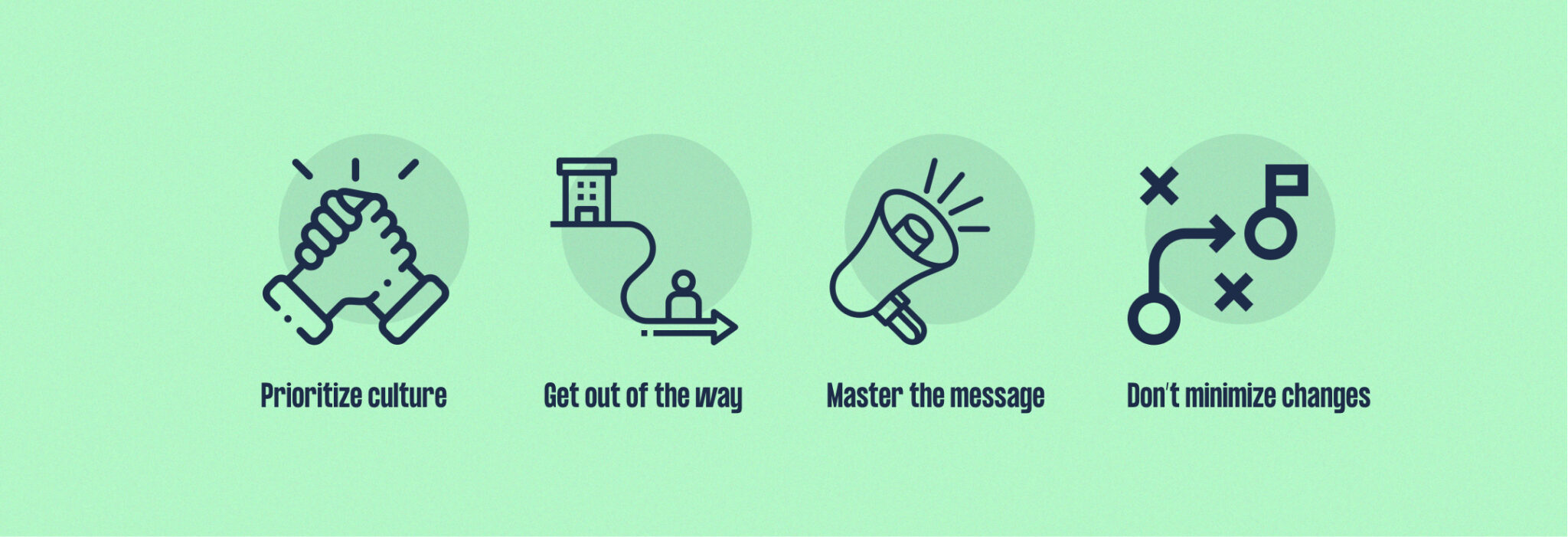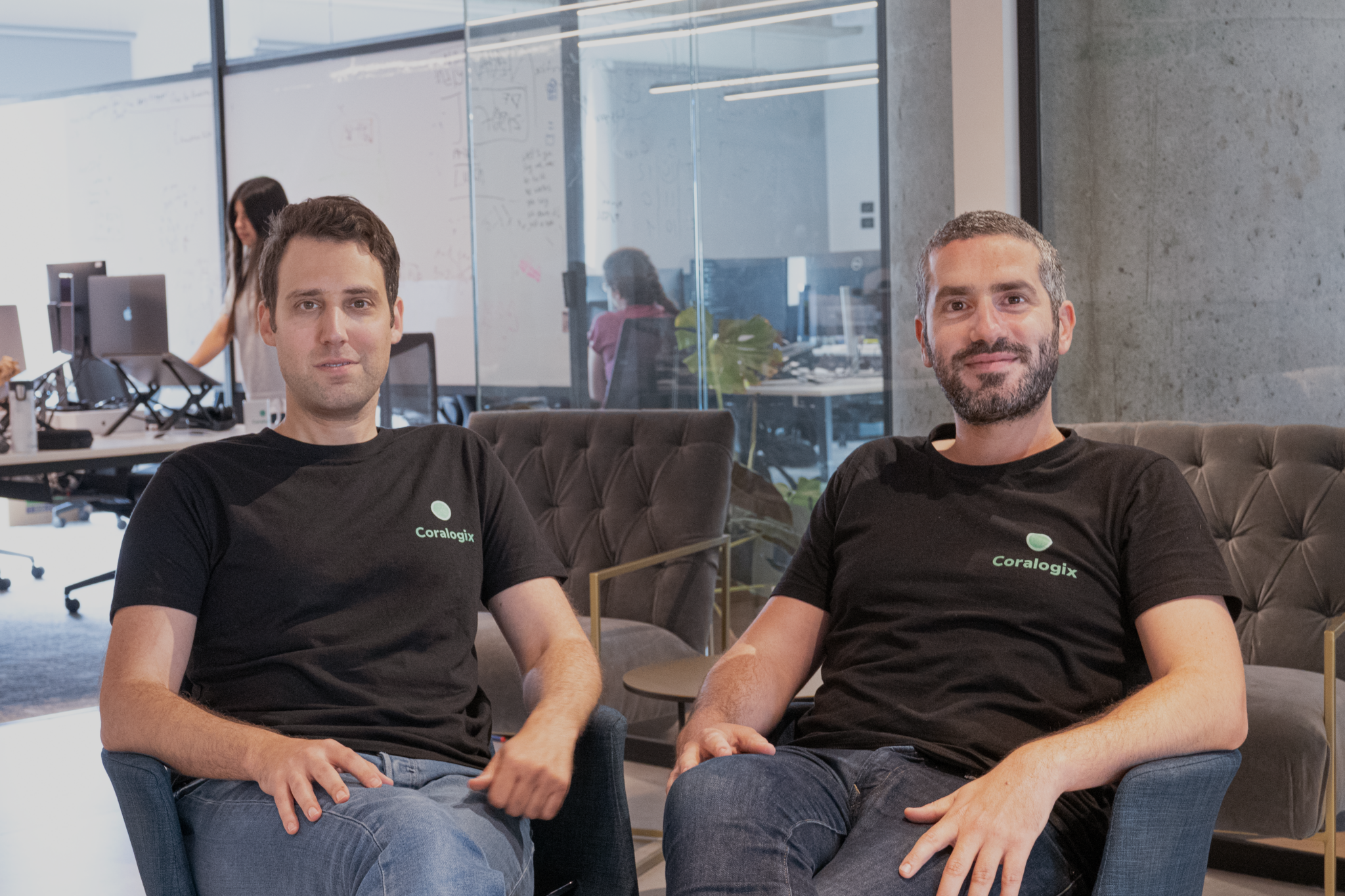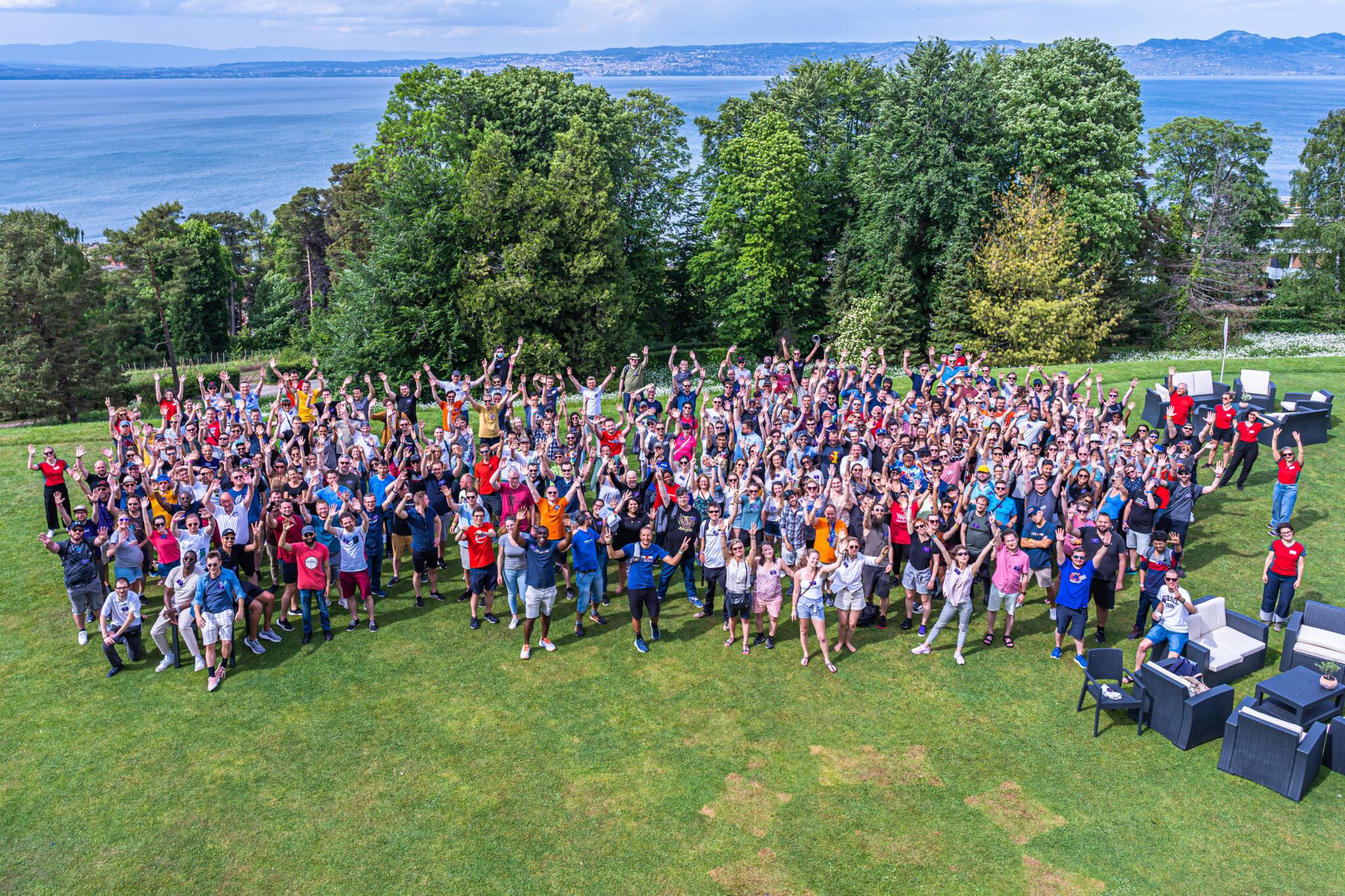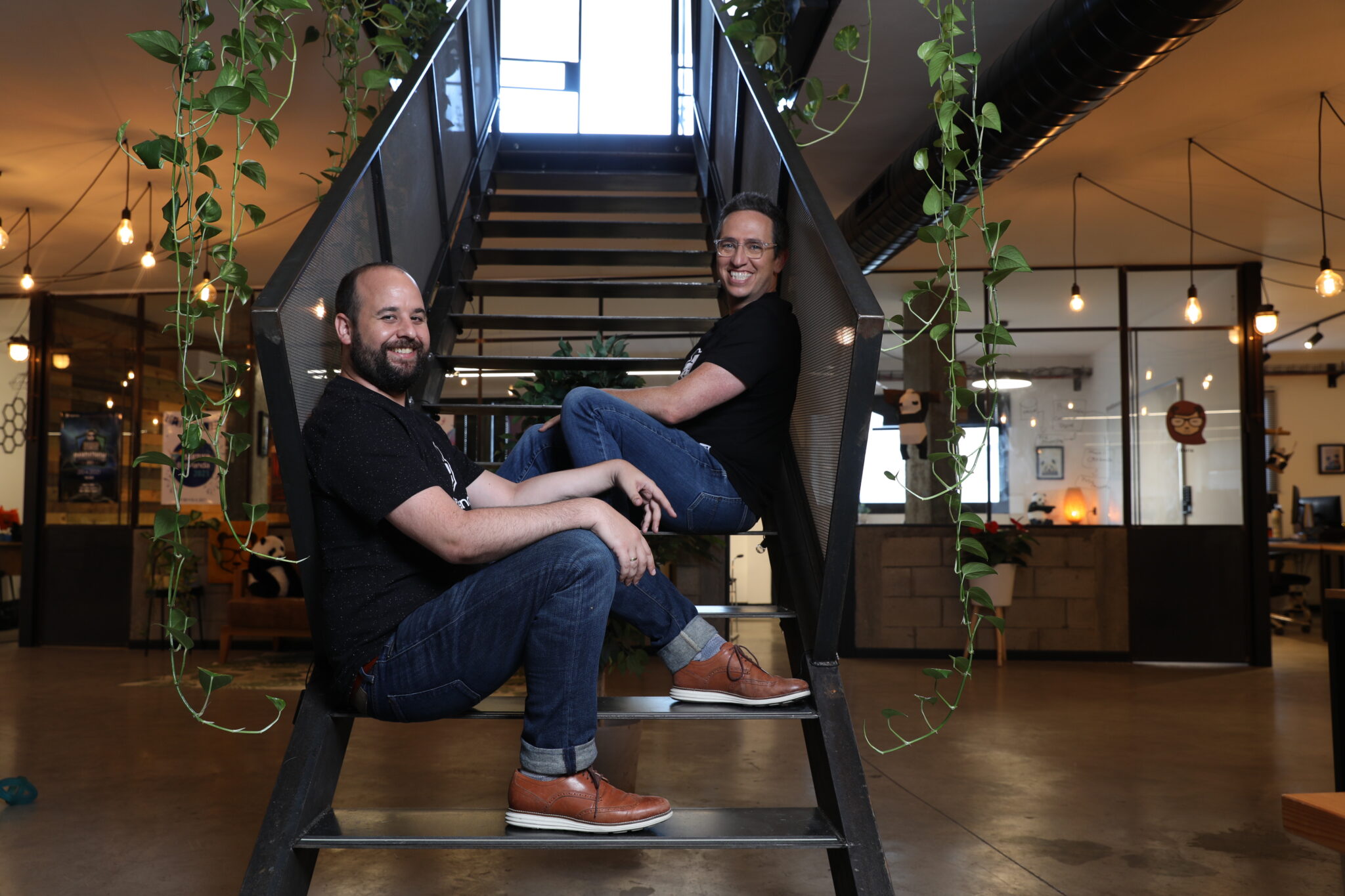
Ashwin Krishnan • October 11, 2021Perspectives
Passing the baton
CEO transitions at founder-led companies are hard; Conservice shows how to do it right
- Finding the right candidate is only the first step in a successful leadership handoff; thoughtful planning can help minimize the shock to employees and customers
- Alignment on culture and values is critical and has to be messaged clearly to all stakeholders
- A hand-off means change; articulating the extent of it and embodying it by making sure the outgoing CEO truly lets go helps everyone rally around the new leader
Until last year, the only leader the employees of utility billing management company Conservice had ever known was Dave Jenkins, who founded the company in 2000.
As CEO, Jenkins was down-to-earth and kept an open door and a willing ear. He emphasized inclusion and transparency, and he thought about little things that mattered—a top chef to make lunch better, a free shuttle service for events. “Conservice cares,” he said, and made it a company mantra. At monthly “State of the Rebellion” meetings to review the company’s progress, he would field hundreds of questions from employees.
As Conservice grew to five million customers and the workforce to 2,500—mostly in Logan, Utah—employee turnover was low and loyalty in the management ranks was high.
Time for a change
But in 2018, as the company was closing in on a round of funding, Jenkins told his board of directors that he was looking to exit his role as CEO. He wanted to be more available to his college-bound and adult children, he had some philanthropic interests, and he was itching to work on his golf game.
“This is a very demanding job,” he says. “It’s nights, weekends, holidays, vacations—it’s just nonstop. And it had been like that for years. So it was time for a change.”
Dave Jenkins
Founder and Chairman, Conservice
Founder transitions are notoriously hard. The mission can get diluted and the strategy muddled, as a strong culture fizzles and defections rise. Incoming CEOs often lack the goodwill or moral authority to make difficult decisions or build consensus. The list of companies that have lost their way after a founder-CEO steps down is long. In some cases, founders have been forced to return, either temporarily or permanently, to right the ship, as Starbucks’ Howard Schultz, LinkedIn’s Reid Hoffman, Zynga’s Mark Pincus or Reddit’s Steve Huffman have had to do.
That’s why I think there’s much to learn from Jenkins’ thoughtful and deliberate approach to the process, which has helped to preserve Conservice’s solid client relationships, its leading market position and its cohesive workforce. It’s all the more impressive as neither Jenkins, nor his chosen successor, Scott Hardy, had a playbook for how to proceed.
“This isn’t something they teach at school,” Jenkins says. “And if you haven’t done it before, you’re just kind of flying blind.”
Putting values and people first
Working with Advent as a sounding board, Jenkins ultimately decided to prioritize values and people. While the search for a successor turned up many qualified candidates with proven successes, Hardy not only had extensive operational experience—he’s a veteran of McKinsey and was COO at Vivint—but also a deep appreciation for the connection between culture and performance. “What separated you from everyone else in my mind was your attention to the importance of culture in an organization,” Jenkins told Hardy in a video interview created to introduce the new CEO to employees.
Scott Hardy
CEO, Conservice
The passing of the baton, in August 2020, was meticulously planned. First, Hardy spent weeks learning about Conservice from Jenkins. Together, they developed a script for introducing Hardy to the organization in a way that would help employees rally around their new leader. It included a series of videos that emphasized continuity and were designed to build trust. And crucially, Jenkins truly relinquished control even as he remained engaged as chairman of the board. In the early days of the transition, the two spoke several times a week, as Hardy tapped Jenkins’ institutional knowledge and insights, but there was no ambiguity as to who made decisions.
“It’s important that there’s a clear hand-off and clear roles of counselor and guidance versus decision-maker,” Hardy says. “Otherwise, the new CEO is going to be neutered a little bit.”
Keys to a successful transition
It’s been just over one year since the transition as of this writing. And while there certainly are challenges—especially given the company’s rapid growth, the pandemic and the tight labor market—everyone is doing their best. Indeed, our experience observing CEO hand-offs through the years suggests this transition is a model example. The two executives assuaged employees and energized the team around Hardy’s vision for going forward.
Here are a few important things they have done right:
- Prioritize culture. After two decades of building Conservice into the kind of company he wanted, Jenkins knew Conservice’s culture was widely cherished by employees. It was natural for him to key in on it as an important measure for evaluating CEO candidates. He wanted someone who would both embrace it and understand its critical importance to the company’s future. “Regardless of who’s leading, if that person buys into that culture, they can move it forward fairly easily,” Jenkins says. “People will rally around them.”For Hardy, spending time getting to know the team and the company’s ways and traditions was an important first step. “It helped me create some trust with the existing leadership team,” he says.

- Get out of the way. A conscious decision to remove Jenkins from view helped employees and customers shift their focus from the outgoing to the incoming CEO. “Otherwise, they’d just do what was familiar and keep coming to me,” says Jenkins. After recording a series of video interviews with his successor, Jenkins dropped out of the picture, at least from the employees’ perspective. Communication between the two remains frequent and fluid. But publicly, the focus shifted entirely to Hardy.
- Master the message. Naturally, employees were curious about why Jenkins was leaving and had different reactions to the news. Jenkins says it was helpful to be able to note the company’s 20-year anniversary as an important milestone that explained the timing for his departure. And by offering clear details on how he would be involved going forward, he managed to provide comfort to employees who felt blindsided by the news.There were other important things to convey. Who was Hardy, and what did he plan to do? In this age of Zoom, recorded videos proved to be an effective tool, first featuring interviews with both CEOs and then Hardy’s own video, in which he laid out his vision.
- Don’t minimize the changes. Some level of continuity was important to both Jenkins and Hardy, and certainly when it came to culture, they both agreed to maintain much of what Jenkins built. But the transition meant change was coming. Helping to clearly distinguish Hardy’s approach and priorities from Jenkins’ gave employees a vision to rally behind.To help define his priorities, Hardy met with the executive team regularly, seeking input and securing buy-in. Then he was deliberate in sharing his vision down the ranks of the organization, helping to engender a common understanding and sense of ownership among all employees.“That creates alignment and clarity of purpose,” Hardy says. It helps to answer what they’re really thinking: “A new leader is coming in, it’s a big transition, we’ve never known any other leader. What does it mean for the organization?”
With a transition this well-planned, the answer seems to be “more positive momentum.” And that should benefit all of Conservice’s stakeholders over the long term.


